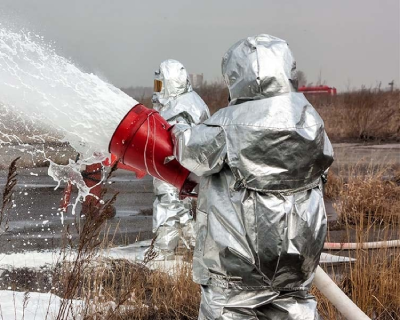|
This is a post by Matt Doll of the Minnesota Environmental Partnership, and is shared here with permission.
Developed at 3M in the 1970s, the PFAS class of chemicals are useful for making products waterproof and easy to clean, among other uses. They don’t break down easily, and there’s no natural process that makes it happen - hence the use of the term “forever chemicals” to describe them.
The fact that PFAS doesn’t break down in the environment would be bad enough. But many of these chemicals contribute to a myriad of health conditions - cancer, vaccine resistance, high cholesterol - makes their rapid proliferation a worldwide tragedy. And those are just the effects we know of today. No one on this planet chose to put PFAS in their bodies, but almost of us have it anyway. These chemicals have made their way into our bloodstream through water, fish, and consumer products. Some communities, like parts of the eastern Twin Cities Metro - home to an old 3M dumping site - have it worse than others, facing appalling rates of illnesses like childhood cancer. Some of the worst offenders among PFAS chemicals - specifically PFOA and PFOS - have been largely phased out in most countries, leading to dramatic reductions in their prevalence in human bodies. But others continue to be used in numerous consumer products and in concentrated sources like firefighting foam. And we’re only just beginning to learn about the horrifying scope of PFAS usage in pesticides (as if one of the world’s worst environmental offenders couldn’t get worse!) Taken together, the story of PFAS so far is a gloomy one. Humanity will be dealing with the health ramifications of these toxic substances for generations to come. But in Minnesota, the birthplace of PFAS, we might be starting to turn things around. The Minnesota response The good news is that we have simple, effective tools for reducing the amount of PFAS in our bodies: halt their use, and make sure that our drinking water is protected. Those solutions are the basis for the package of PFAS legislation currently advancing at the Capitol, which MEP has identified as one of our key priorities to pass this session. Most are included in one or both of the Environment Omnibus Bills introduced in the House and Senate. The solutions proposed in these bills have included:
These bills certainly haven’t gone unopposed. Lobbyists representing a wide array of chemical companies flew to Minnesota earlier in the session to argue that companies will be unfairly burdened by these proposals. They made arguments about the cost of compliance, the fact that not all PFAS chemicals have yet been identified as causing harm, and the challenges of having different chemical laws in different states. That last argument should be taken with an especially large grain of salt - the chemical industries aren’t exactly thrilled by the idea of nationwide regulation, either. The chemical lobby stood in contrast, especially in comparison to students and parents from Tartan High School in Oakdale - ground zero for PFAS exposure. These community members shared their own stories with Legislators of how their loved ones’ lives have been devastated or cut short by PFAS-related cancers. Legislators have modified some of their provisions, but they aren’t stepping backward on the PFAS package, nor should they. If signed into law, it would represent among the strongest actions ever taken in the United States to combat this health threat. It’s encouraging to see the signs around the world that the use of PFAS substances is waning. 3M, which faces major lawsuits for its role in this crisis, has committed to phasing out their PFAS manufacturing entirely by 2025. The European Chemicals Agency has proposed phasing out PFAS across the entire European Union. Maine has passed a law that bans all intentional inclusion of PFAS in products by 2030. Here in Minnesota, we’re working to start fixing the PFAS problem where it began. We owe it to ourselves, our kids, and the world to get it right. For previous columns by Matt, visit mepartnership.org/category/blog/. If you would like to reblog or republish this column, you may do so for free - simply contact the author through the LWV UMRR email: [email protected].
0 Comments
Your comment will be posted after it is approved.
Leave a Reply. |
| LWV Upper Mississippi River Region | UMRR blog |

 RSS Feed
RSS Feed